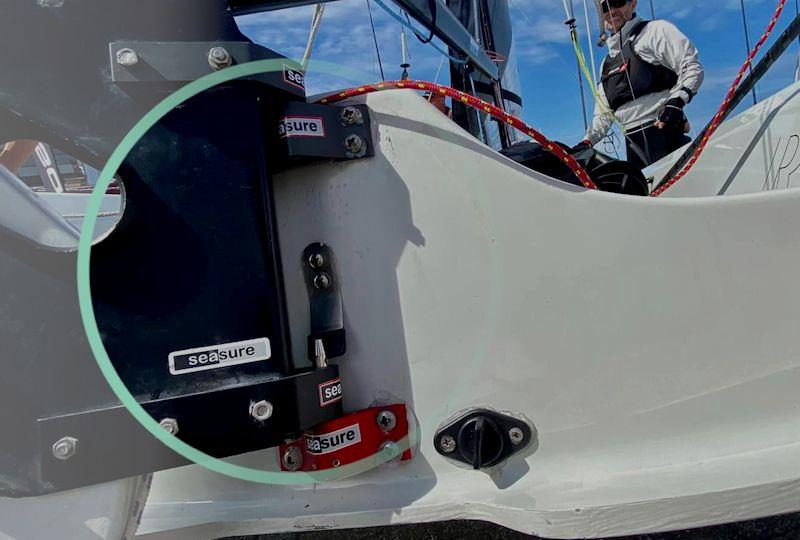
Sea Sure Marine Hardware - Dedicated to Quality Dinghy Components
by Phil Anniss 22 Dec 2022 17:00 GMT

1 in 10 dinghies produced worldwide has Sea Sure transom hardware © Sea Sure
The Sea Sure brand first appeared in the 1960s at the start of the boom of dinghy sailing in the UK. However, prior to that, the company made a name for itself producing components for Spitfires during WW2. Post-war, they were looking for new cross-over markets where they could capitalise on their skills for designing and fabricating fittings and their location on the south coast of England made the rapidly expanding sailing sector a natural progression.
Nearly 60 years later and they have an extensive range of dinghy and small keelboat hardware. One area where they have developed a global reputation is transom hardware. According to Technical Sales Manager, Dan Henderson, "At one point, one in four dinghies produced worldwide had Sea Sure transom hardware, however, with increased competition from China and other big brands, that is probably closer to one in ten today."
Even so, it is a significant volume of the worldwide market for a relatively small, specialist UK manufacturer.
Dan puts their success down to their strategic decision to retain a tight focus on dinghies and small keelboats and not be drawn into building components for larger sailboats. This has given them an intimate knowledge of this sector and allowed them to refine their 2000 strong product catalogue to cater for virtually every need.
Attention to quality is also a key element of their success. Everything is designed and built in-house and their manufacturing facility in Warsash, on the River Hamble, is a fascinating afternoon tour! Every nook and cranny of the labyrinth of machining, assembly, and testing spaces is packed full of equipment and is constantly bustling with activity. Sea Sure puts a lot of emphasis on their ISO9001 compliance which means they can trace every batch of material back to its melting point.
They also do batch pull testing to prove each product conforms to their designed specifications, and for some applications every part is pull tested.
This testing culture leads to constant fine-tuning and improvement of all their core products. Dan uses the simple stainless steel ring as an example - "You should always compare the break load, rather than just diameter and material, of the stainless rings you buy, because they can vary significantly across suppliers. Our stainless rings are amongst the highest strength to weight/diameter available on the market due to the quality of the materials and the control of our production processes."
Dinghy sailing went through its boom years in the 70's - 90's and has since stabilised. Therefore, to keep growing as a business, Sea Sure has stuck to its core competencies of high quality, small component design and manufacture to expand into some very interesting new markets. For example, virtually all Nato Parachutes use Sea Sure stainless steel rings and buckles and their drop nose pins are also used in a "vast" number of loft ladders and feature in the water-tight doors of P&O Ferries!
Their engineering and design capabilities also lead to a significant amount of custom project work which also opens up opportunities for growth. One current major growth area for the company is shock absorbing seats for RIBs and fast launches. This started as a small-scale, custom, leisure marine project but having developed a market leading product, their Shock Mitigation Units are now poised to explode across commercial and military applications.
However, despite all these other exciting projects the core of the Sea Sure business remains developing new fittings for dinghies. One of their latest successes stories is their Infinity Furler:
This is a tiny, low cost, code zero furler with an impressive 500kg Safe Working Load which has given the large number of cruising dinghy sailors out there the opportunity to have a cost effective jib furling solution.
If you have any questions about Sea Sure's extensive range of products you can contact us at or browse their range online by clicking the link below:
